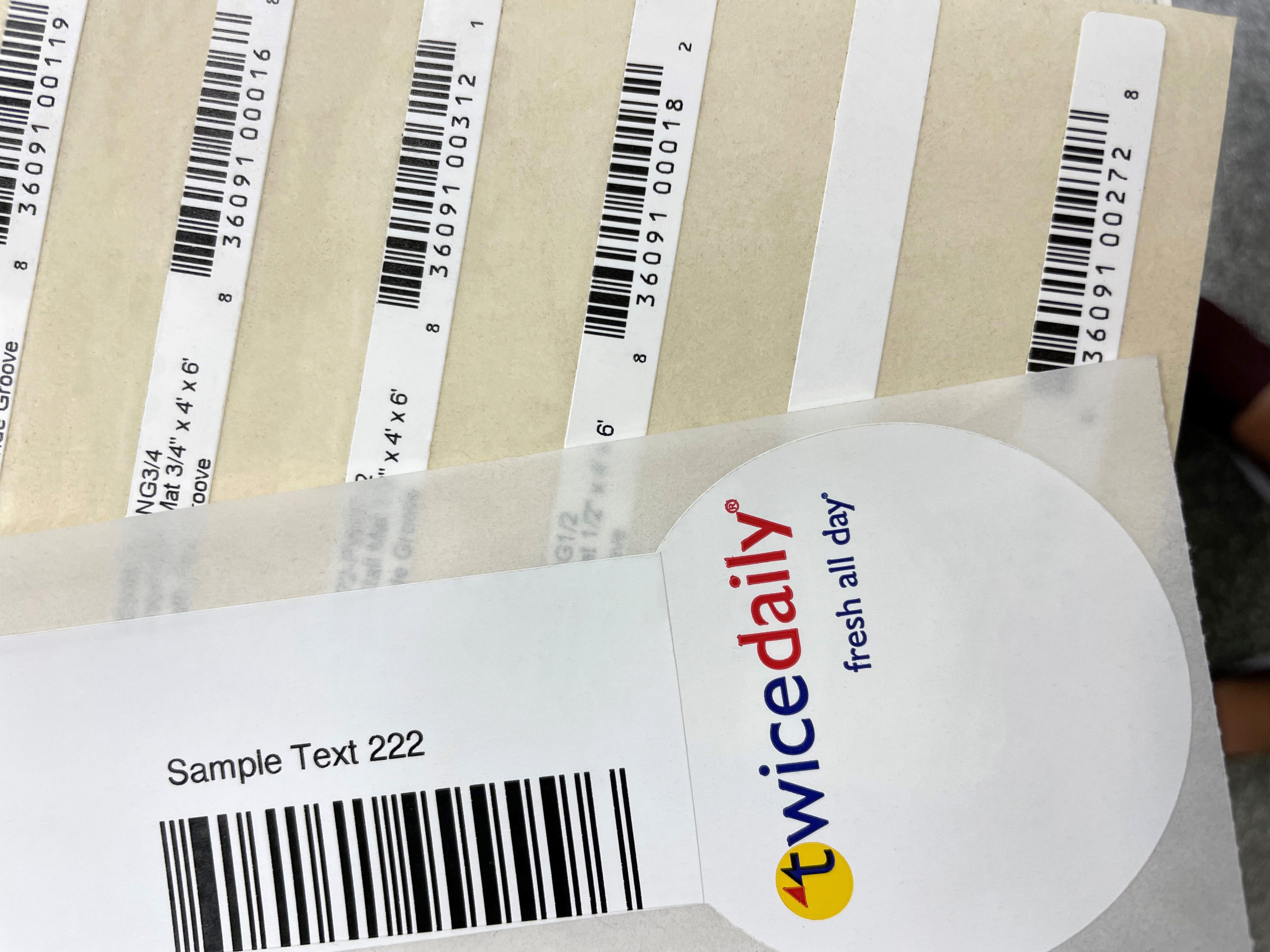
There’s more to product labels than design and branding elements like logos, images, ingredients, and product names. Ensuring your product has proper labeling also means you must consider unique elements like barcodes and/or expiration dates. When each individual product needs some type of unique element, such as a barcode, no two labels are the same. That makes the printing process a bit more complex.
The best and most popular method for printing unique elements like barcodes onto labels is thermal transfer labels. Thermal transfer printers have the ability to print a variable one color image that is different on every label.
Most of the time, thermal transfer labels are used for barcode labels and clothing labels (for example, labels or tags that display the size.) Thermal transfer is not typically used for prime product labels.
This technology has been used for many different types of products in various industries — from industrial barcodes that change with every label, to printing batch numbers on pre-printed wine labels.
To start, thermal transfer labels have excellent print definition for text, images and barcodes. These types of printers can produce stable and durable images that are long-lasting and resistant to fading.
Thermal transfer labels can endure harsh environments — they have better resistance to heat, moisture and chemicals compared to direct thermal labels.
Another advantage of thermal transfer labels is that you have more options for customizing and branding the labels. For example, there’s a wide variety of paper and synthetic materials to choose from with these types of labels, including clear, pearl, metalised, and fluorescent. You can even opt for different colored ribbons (used in the printing process) to add a unique flair or match your branding.
There are only a few cons to using thermal transfer labels for items like barcodes. Obviously, not all printers are thermal transfer compatible. Since ribbons are required for this type of printing, ribbons must be kept in stock, which increases the cost slightly when compared to direct thermal labels. Lastly, depending on the level of expertise and amount of attention-to-detail the label maker has, ribbons can wrinkle and compromise print quality. Always turn to experts in thermal transfer labels who have produced quality materials for previous clients.
The best approach is to learn the exact application for your labels so we can match the material and adhesive to create the most durable label possible for your products. That way you can also learn the different types of adhesives and why a “permanent” adhesive doesn’t fit all “permanent” applications.
From freezer-friendly to reclosable; wet apply to fully removable, we have the adhesive to best fit your application.
Many times custom label and packaging companies can supply a printer so you can add variable data printing to your production line. You may also have access to printer solutions like thermal transfer and continuous ink jet. For example, if you choose to print the variable data on your own packaging line, we can supply pre-printed labels with the blank space needed to print your thermal transfer variable image.
Printing a variable one color image that’s different on every label doesn’t have to be intimidating or complicated. With the right label and packaging company by your side, you can rest easy knowing your product labels will be exactly what you need.
Let us help you create the perfect label for your product. Get in touch with us to talk about what Mammoth can do for you. Contact our digital label experts today for the innovative solutions that can make your products truly shine.